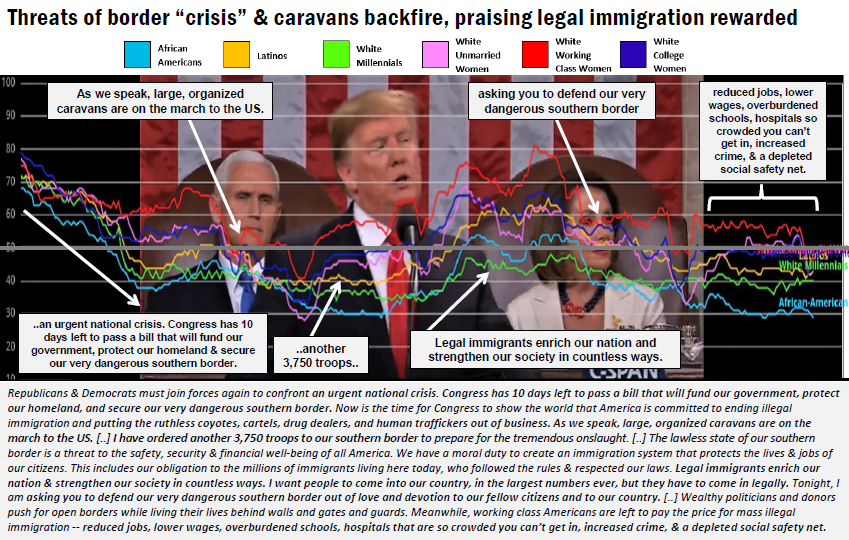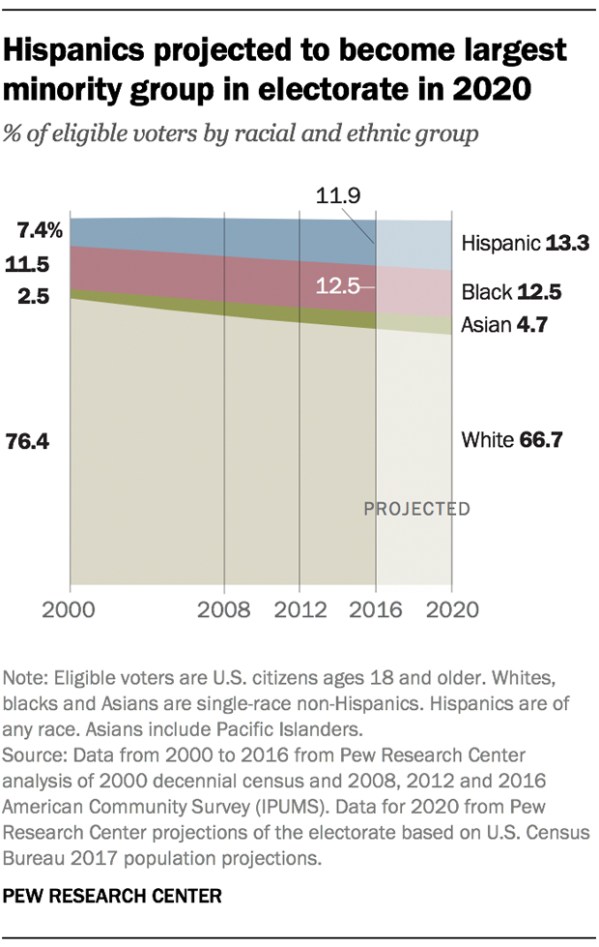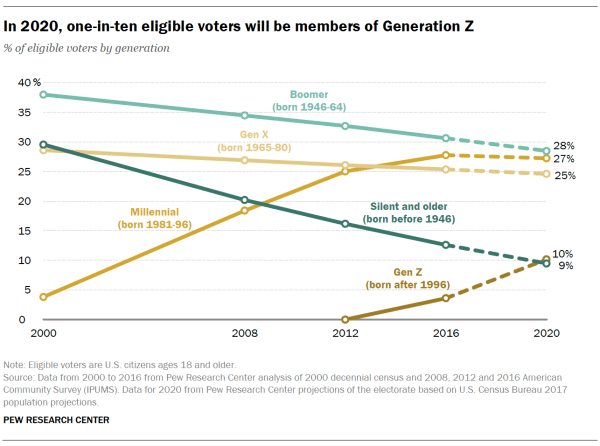In “These governors are showing what happens when you campaign on climate action and win: There’s a flurry of green political news at the state level” at Vox, David Roberts writes that “Since climate change was first introduced to US politics, most attention and debate have focused on a federal solution, but most actual policy progress has taken place at the state level. States are where everything from cap-and-trade systems to renewable energy mandates have actually become law…And so it remains today. Most of the buzz in current climate politics, especially with the presidential race beginning to take shape, is around a Green New Deal, a grand, comprehensive set of federal investments and regulations…But a GND is a long way off, even if everything goes well. Meanwhile, once again, US states are stepping up. The 2018 midterms saw several green-minded governors either elected for the first time or reelected, and they are wasting no time pushing forward.” Roberts provides details of reforms om Oregon, New Mexico, Colorado, Illinois, Maine, FLorida and Idaho and adds that “The call for 100 percent clean energy is practically Democratic orthodoxy at this point. And Trump’s wan attempts to save coal look sillier and sillier.”
Ronald Brownstein previews “The Coming Democratic Drama Over Medicare for All: The policy’s supporters could run up against the same problems that Republicans faced in trying to repeal Obamacare” at The Atlantic, and observes, “Ending private insurance would affect the 181 million Americans who today receive health insurance through their employers, according to census figures...The share of Americans who receive coverage through work is significant: about two-thirds of adults with a high-school diploma, three-fourths of those with a two-year college degree, 87 percent of those with a four-year degree, and 90 percent of those with graduate education. Not surprisingly, that means extremely large percentages of adults receive health coverage through their employers in many of the affluent suburban districts that powered the Democratic takeover of the House last November.”
Brownstein adds that “More than four-fifths of the population receives employer-provided coverage in a wide range of districts that Democrats flipped from the GOP in 2018, including suburban seats in Northern Virginia and New Jersey, and seats in Chicago, Minneapolis, and Detroit, according to census results. And roughly three-fourths receive health insurance through their employers in districts that Democrats won elsewhere: in northeast Iowa; Irvine, California; Salt Lake City; Virginia Beach, Virginia; and the suburbs of Richmond, Virginia; Atlanta; Des Moines; Kansas City, Kansas; and San Diego. By contrast, in the much more working-class New York City district won by the liberal champion Alexandria Ocasio-Cortez, just 56 percent of the residents have employer-provided insurance.”…In [Democratic pollster Geoff] Garin’s survey for Protect Our Care, Democrats split exactly in half on whether they want the party to pursue reforms that build on the existing employer-based system or replace it entirely with a single-payer structure.
Geoffrey Skelley reports that “Almost Half Of Voters Are Dead Set Against Voting For Trump” at FiveThirtyEight: “With the 2020 election cycle revving into full gear, pollsters are asking voters whether they plan to vote for President Trump. In a Washington Post/ABC News survey, respondents were asked if they would definitely vote for the president, consider voting for him or definitely not vote for him — and 56 percent said they would definitely not vote for him. Morning Consult poseda slightly different form of this question, asking voters if they’d definitely or probably vote for Trump, or if they’d definitely or probably vote for someone else. Eight percent said they would probably vote for someone else, but 47 percent said they would definitely vote for someone else. In total, that’s 55 percent of respondents who seemed unlikely to vote for Trump…The share of voters who said they would “definitely” oppose Trump is much higher than it ever was for Obama. In fact, the average share of voters who said they would “definitely” oppose Trump is roughly 10 points higher than it was for Obama more than 600 days out from the election, which is where we are now.”
In “Other Polling Nuggets,” Skelley writes, “If Trump and congressional Democrats fail to come to a border security agreement in the next couple of weeks, 48 percent of Americans said in a Monmouth University poll that the parties should agree to fund the government through the end of the year without a deal. Twenty percent said they should shut down the government until a deal is reached, and 26 percent said they should extend the temporary funding and keep negotiating. Asked about the idea of Trump’s declaring a national emergency to build the wall, 64 percent of respondents said they disapproved, while 34 percent said they approved.”
“Every extremist murder in the U.S. in 2018 was linked to right-wing extremism, according to an alarming new report from the Anti-Defamation League’s Center on Extremism,” notes Caroline Orr at Shareblue Media. “The annual report found that at least 50 people were killed by extremists in 2018, marking a 35 percent increase from 2017. This makes 2018 the fourth-deadliest year on record for domestic extremist-related killings since 1970…All 50 murders were committed by people with ties to at least one right-wing extremist movement, making right-wing extremists responsible for more killings in 2018 than any year since 1995, when Timothy McVeigh bombed a federal building in Oklahoma City…According to a November 2018 report by the Center for Strategic and International Studies, the number of terrorist attacks in the U.S. committed by far-right perpetrators more than quadrupled between 2016 and 2017.”
As we go to press, Virginia Governor Ralph Northam says he plans to stay on as Virginia’s governor, in the wake of revelations of his racist behavior as a medical student. But his real-world choices are whether or not he will resign soon, or prolong the agony for his constituents, his state and his fellow Democrats, and resign later. Northam may be in denial that he can somehow survive and finish his term without tearing up Virginia’s body politic, but that delusion will soon evaporate in the growing chorus of nearly all Virginia’s leaders clamoring for his resignation. Fortunately for Virginia, the state has an impressive young Lieutenant Governor waiting in the wings in Justin Fairfax. Stephanie Mencimer notes in her Mother Jones profile of Fairfax, that “Virginia governors serve only a single term of four years. But Fairfax could end up serving for seven. As an appointed governor, he would fill the three years remaining in Northam’s term and then would still be eligible run again in 2021 as an incumbent.” We understand why that prospect aggravates Republicans, who are also in denial about Virginia’s transformation into a Blue state. But Northam can do his state and his legacy a service by resigning sooner than later, and help empower Fairfax to heal the state they both love. Any other alternative can only do the opposite.
Meanwhile, Former Virginia Governor Terry McAuliffe, who has called for his friend Northam to resign, is reportedly mulling over a possible run for the Democratic nomination for President. McAuliffe has said he will make his decision by the end of March, but it could come sooner. Either way, McAuliffe, who has an extraordinary track record of accomplishments as Governor, also deserves a shout-out for his outstanding leadership in guiding Virginia from red to purple to blue statehood. It would be a shame if Northam endangers that legacy by putting careerist priorities before interracial unity and goodwill in Virginia, which can no longer thrive under his leadership. In an NPR interview with Michel Martin, McAuliffe credited Northam with doing a “very good job getting Medicaid expansion done last year,” but also said, “we’ve got to move forward. Our state is in a very good position…But he’s just going to have an impossible task now when everybody in the state has called for him to resign. We’re in the middle of legislative session…This is the time that the governor has to be leaning in. You have the Black Caucus who is adamant that he step down…the point is he knows what’s in the best interests of Virginia.”
Sam Wang discusses how “A Redistricting “Reform” Bill in Virginia Would Entrench Politicians Further” at The Princeton Election Consortium: “In 2011, Virginia was gerrymandered, both racially to hurt black voters, and on a partisan basis to benefit Republicans. We estimate that black voters (and therefore Democrats) lost three seats by being packed into a dozen districts in southeastern Virginia. And in 2017, Democrats just barely failed to take control of the House of Delegates despite winning 54% of the statewide vote. But that artificial dominance is about to fall. In a lawsuit concerning the House of Delegates map, Bethune-Hill v. Va. State Board of Elections, a federal court selected one of several maps offered by a Special Master (which we had analyzed). If the U.S. Supreme Court allows this new map, Democrats would be likely to take the chamber in 2019. If Democrats also take the Senate, they would control the legislative process – and redistricting…In the face of such a potential flip, Republican leadership in the Virginia House has proposed a new redistricting process, HJ615. It is sold as nonpartisan reform. But Ben Williams and I find that it is more likely to entrench whatever party is already in control.”






